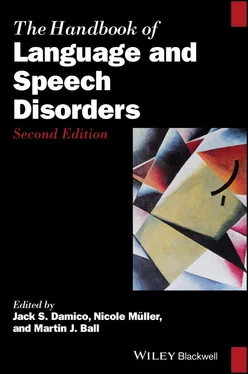Perhaps the most salient demonstration of a mechanism of symbolic interactionism and its impact on labeling at the societal level involves what has been termed “medicalization theory” (Williams & Calnan, 1996). This explanatory mechanism involves the impact of society and its values acting through a particular societal institution—medicine—to create new diagnostic categories or to redefine or expand old categories according to current sociocultural values and beliefs (Conrad, 2007; Halpern, 1990; Zola, 1972). In addition to the extension of medical boundaries, in the process of medicalization, nonmedical problems become defined and labeled as medical problems, usually as disorders or illnesses. For example, over the past 40 years there have been numerous new medical categories that did not exist before that time. Medical categories and labels like attention deficit hyperactivity disorder (ADHD), anorexia, chronic fatigue syndrome, fibromyalgia, and post‐traumatic stress disorders have all been established in this time‐frame, and other categories have been redefined to create expansions (Conrad, 2009; Conrad & Potter, 2000; Erchak & Rosenfeld, 1989; Halpern, 1990; Klasen, 2000; Rosenfeld, 1997; Zola, 2009).
One example of redefinition through medicalization involves cognitive changes associated with high old age. Until a few decades ago, the notion of senility was accepted both socially and medically, and highly “successful” aging, that is, a person living into their 80s or 90s without noticeable deterioration of memory, orientation, or other cognitive skills was considered the exception rather than the norm. However, a combination of social and medical factors have moved what was formerly understood as senility firmly into the realm of dementia (in public and media discourses more often than not identified with Alzheimer’s disease), that is, a disease process socially constructed as something that is, by definition, not part of “normal” aging (even though the well‐established major risk factor for a diagnosis of Alzheimer’s disease is old age). While some researchers argue that conflating the low‐functioning end of a normal distribution with a genuine disease process may be less than helpful in leading to an understanding of either normal or pathological aging, age‐related “dementing” is, in public discourses in the United States and other industrialized nations, at present framed virtually exclusively within a disease model (Fox, 1989; Guendouzi & Müller, 2006; Müller & Schrauf, 2014)
Conrad and Potter (2000) have provided excellent demonstrations of medicalization for category expansion with adult ADHD. Their work details numerous societal factors to create a perception that is then followed by the medical institutional response. For example, there was the emergence of publications aimed at lay readers that heralded the new category, research published with one function but reinterpreted by the media and advocacy groups for their purposes (Zametkin et al., 1990), major news media with their own spin on the issue, popular magazines, organizational stakeholders like Children and Adults with Attention Deficit Disorders (CHADD), and manufacturers of primary drugs for ADHD. Conrad and Potter (2000) detail a set of early claims regarding ADHD in adults that started gaining some attention, and then a strong movement into the public sphere when news organizations began to profile ADHD in adults. Over time, and with the collaboration of sympathetic professionals (Brown, 1995), diagnostic institutionalization occurred through increased attention and support provided by professional publications, research journals, and changes in the medical diagnostic criteria. As detailed by many researchers (Cherkes‐Julkowski, Sharp, & Stolzenberg, 1997; Conrad, 1976, 2009; Damico & Augustine, 1995; Reid, Maag, & Vasa, 1994; Searight & McLaren, 1998), once the category is institutionalized, the stakeholders then engage in various forms of verification to stabilize this diagnostic category. For example, the condition of adult ADHD is a convenient way to medicalize academic or occupational underperformance of young adults in a competitive society. In a social context that includes an orientation to drug management of many conditions, a focus on genetic foci to explain behavioral and societal tendencies, and the rise of managed care so that a diagnostic label may be needed to receive remuneration for services sought or provided, medicalization is more easily understood.
The problem, of course, is that since this is a constructive process, often more influenced by social rather than biological factors, many of these diagnostic categories may be complicated by ambiguity and subjectivity, and this lack of definitional rigor may result in various types of problems. Most relevant to the clinical context is the concern over the authenticity or the construct validity of the various diagnostic categories. In his book, Illness and Culture in the Postmodern Age, Morris (1998) has discussed this possibility for several illnesses and diagnostic categories. He suggested that ADHD and some other socially constructed diagnostic categories (e.g., alexithymia, Gulf War syndrome, chronic fatigue syndrome, multiple personality disorder) may be defined as “postmodern illnesses.” This term refers to categories of illness or behavioral states that are vaguely and subjectively defined and that are controversial regarding their legitimacy as real illnesses. Accordingly, these diagnostic categories often puzzle mainstream medicine, are sensationalized and augmented by the popular media, are confusing to the general public, and have a tendency for being abused (Morris, 1998).
Morris explains this pattern of attention and abuse by suggesting that, rather than being legitimate and objective disease states or disability conditions, these specific illnesses represent changing patterns of human experience and affliction that are shaped by the convergence of biological states, cultural beliefs and social actions. For example, identification of a child as exhibiting ADHD may often be less the result of a neurological or biological condition and more due to a developing tendency of society to treat teachers’ and parents’ anxieties regarding childhood by routinely drugging children into good behavior; that is, social control through medication (Damico, Müller, & Ball, 2004). Whether an accurate depiction or not, the constructive nature of these categories and labels cannot be ignored.
The medicalization of social problems is a complex process, rather than a discrete step; it is better conceptualized in terms of degrees of medicalization. Further, this constructive process is usually a collective action. Although various non‐professional groups and individuals can propose the creation of new or expanded categories or labels, it usually takes sympathetic professionals for success (Brown, 1995). The final requirement for the establishment and application of socially constructed labels and diagnostic categories does, in fact, rely on professional collaboration and this may be referred to as “legitimization” or “professionalization.”
1.3.2 Diagnostic Legitimization
The collaborative process of diagnostic legitimization, whether considered a component of medicalization or a separate process, occurs when professional institutions provide a legitimate cover for the socially constructed categories. Examples of this relevant to our current discussion are some of the diagnostic categories that are enshrined in the American Psychiatric Association’s Diagnostic and Statistical Manual (DSM) or the World Health Organization’s International Classification of Diseases (ICD). Once diagnostic legitimization occurs, many lay people and professionals then treat the diagnostic category as an objective fact or reality.
Читать дальше












